Sustainable Lawn Alternatives and Groundcovers: A Greener Yard Begins Here
Why Replace the Traditional Lawn?
The Hidden Cost of Turfgrass
Conventional lawns often demand constant mowing, fertilizers, and pesticides, sending emissions into the air and nutrients into waterways. Weekends vanish under a mower’s hum, while soil compaction and shallow roots quietly undermine long-term landscape resilience.
Water Savings That Add Up
Replacing even part of turf with drought-tough groundcovers can cut irrigation dramatically, especially when paired with mulch and smart drip lines. Over a season, the savings protect wallets, conserve regional water supplies, and reduce stress during heatwaves.
Biodiversity in Your Backyard
Groundcovers deliver pollen, nectar, and shelter across seasons, inviting bees, butterflies, and beneficial insects to return. Layered plantings foster healthier food webs, where soil organisms thrive and natural balances help reduce pest outbreaks without chemical quick fixes.
Sun-Loving Groundcovers that Thrive Without Constant Water
A honeyed scent rises when you brush its tiny leaves, while purple carpets invite pollinators all summer. Thriving in lean, well-drained soils, creeping thyme is gently stepable, remarkably drought-tough, and a delightful alternative where turf once struggled.
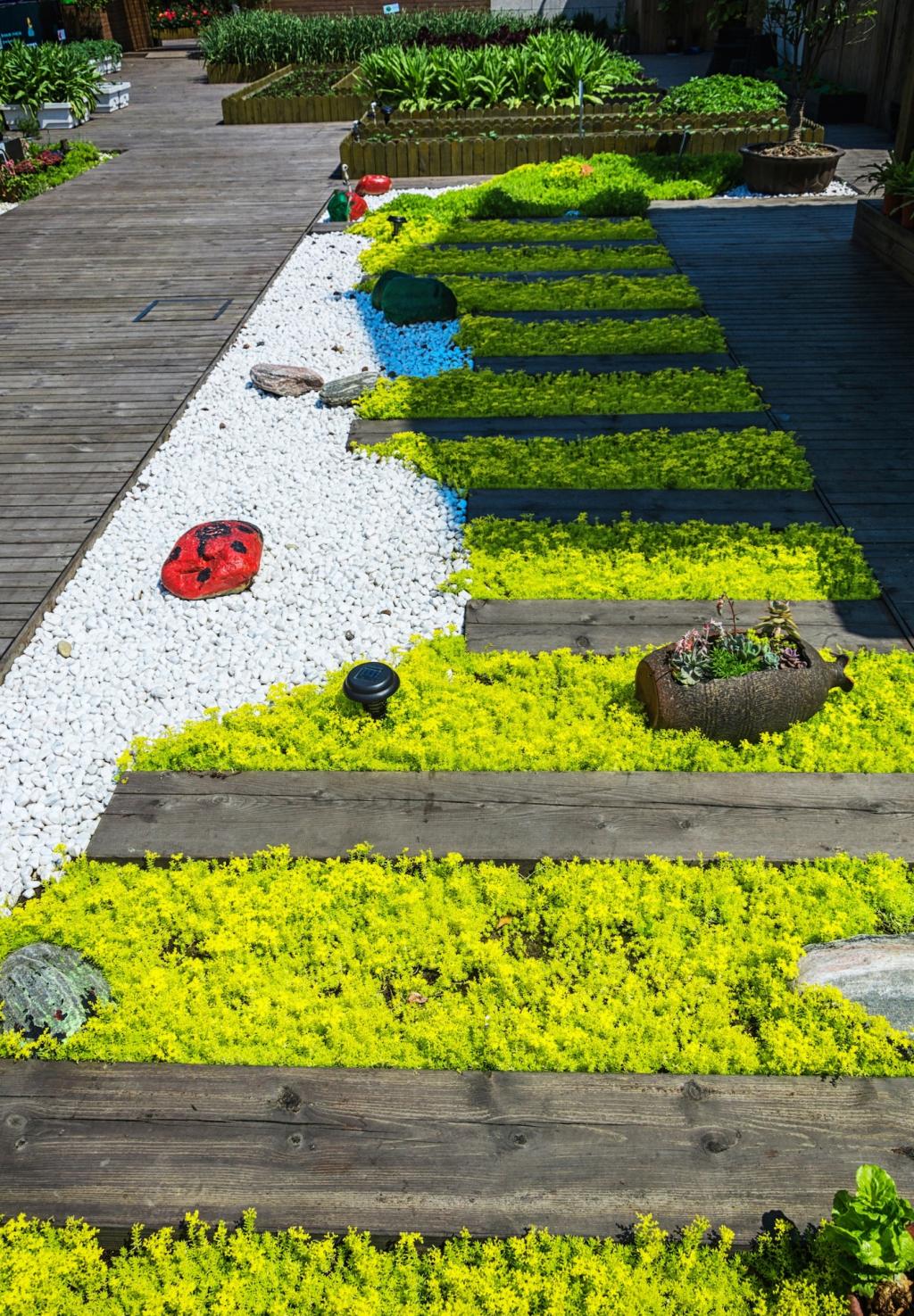
Shade Solutions: Soft, Sustainable Carpets Beneath Trees
Whorled leaves and starry white flowers bring woodland charm to dim corners. It knits a gentle carpet that welcomes leaf fall, prefers consistent moisture, and softens paths where turf would otherwise fade and turn patchy from shade stress.
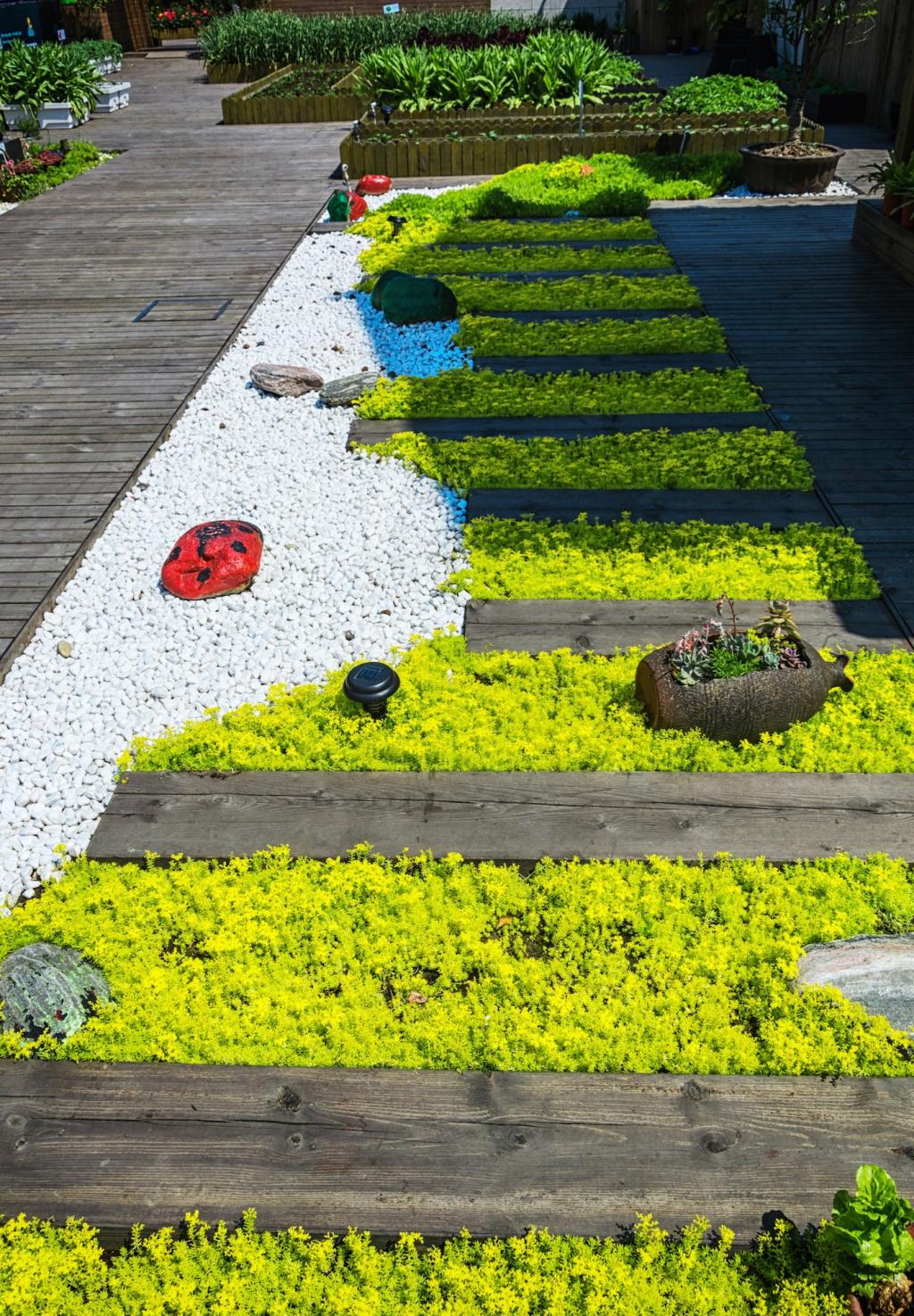
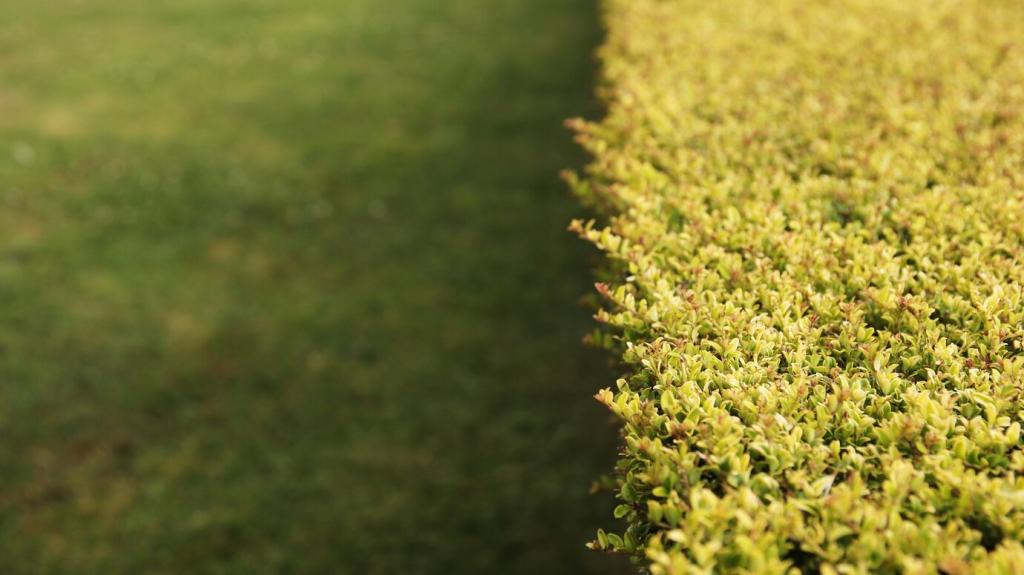
Plan, Prep, and Plant: Building a Long-Lasting Foundation
Skip harsh herbicides by layering cardboard over scalped turf, then adding compost and mulch. This smothers grass, feeds soil microbes, and creates a gentle, long-lasting bed that supports young groundcovers as they knit into a living, low-maintenance carpet.
Plan, Prep, and Plant: Building a Long-Lasting Foundation
A simple soil test reveals pH, organic matter, and nutrient gaps. Add compost, adjust pH if needed, and top with mulch to moderate temperature and moisture, helping sustainable lawn alternatives establish faster with fewer inputs and less ongoing fuss.
No-Mow and Low-Mow Lawns: Beautiful with Minimal Upkeep
Fine Fescue Meadow Mix
Tufted fine fescues create a soft, flowing sward in cooler climates. They tolerate shade, need infrequent mowing, and rarely require fertilizer, offering a calm, lawn-esque look that moves beautifully in wind and resists summer browning with grace.
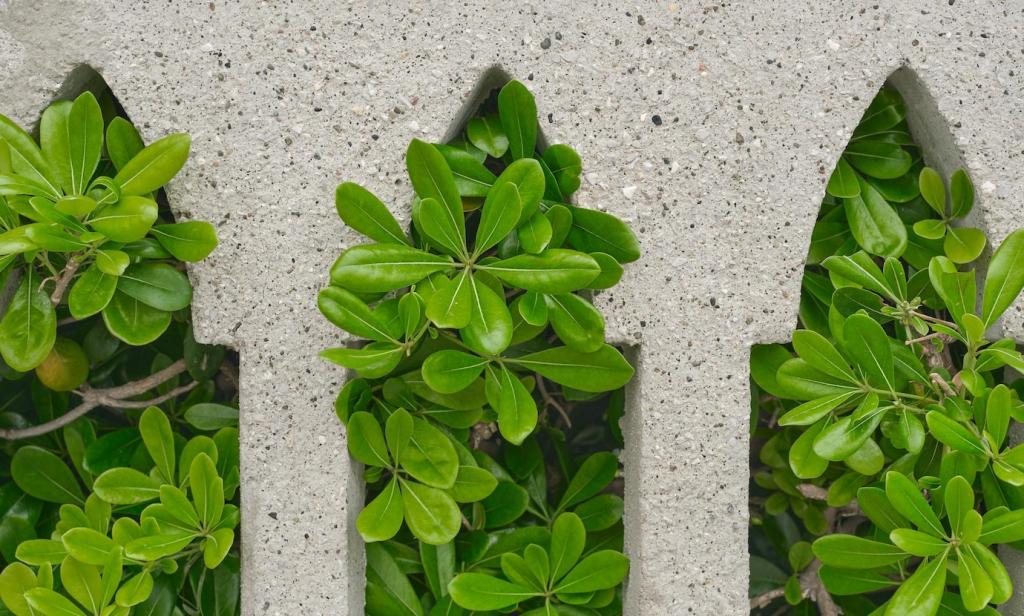
A Bloom Calendar That Feeds All Season
Stagger flowering times from early spring to late fall with thyme, sedums, and regional natives. Continuous nectar reduces pollinator hunger gaps, while varied flower shapes support bees, butterflies, and hummingbirds with different tongue lengths and feeding strategies.
Kid- and Pet-Friendly Choices
Choose non-toxic, flexible groundcovers where little feet roam, and add stepping stones through delicate patches. Durable, low-growing mats near play areas keep maintenance simple while ensuring safe, soft landings during backyard adventures and energetic, spur-of-the-moment games.
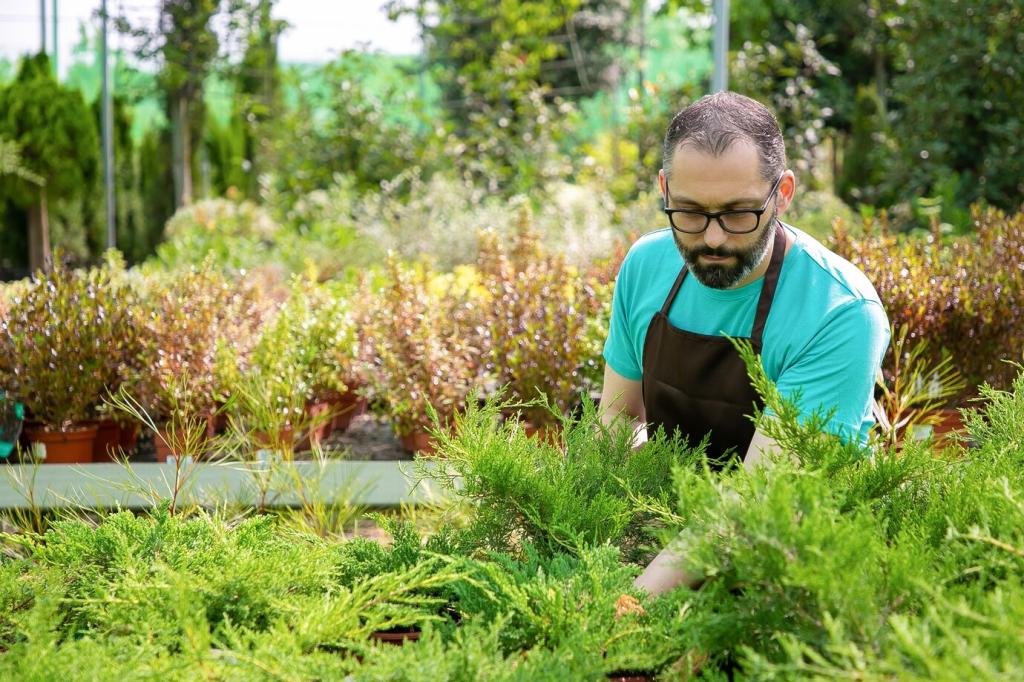
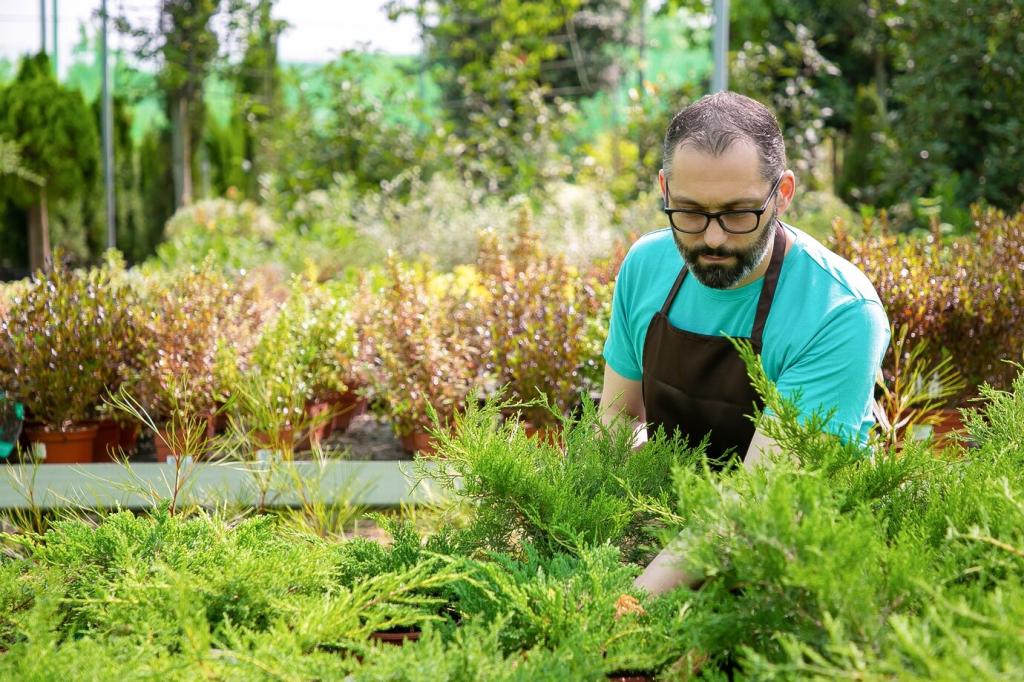
Maintenance Calendar: Easy Care for Year-Round Success
Rake gently to lift winter debris, top-dress with compost, and tuck in plugs or seed to fill thin spots. A light mulch refresh protects moisture while young roots explore and knit your sustainable planting into a steady, living carpet.
Maintenance Calendar: Easy Care for Year-Round Success
Water deeply but infrequently to train roots downward, and pull weeds while small to prevent seed spread. Check drip emitters, trim pathways, and enjoy the color show—then tell us what’s thriving so others can learn from your success.
Reader Story: From Patchy Lawn to Living Mosaic
The First Weekend: Cardboard, Compost, and Courage
Maya and Jordan mapped sun pockets, then sheet-mulched their scruffy lawn with cardboard and compost. Planting creeping thyme and sedums felt bold, but breaking free from weekend mowing felt even bolder—and surprisingly, friends showed up with shovels and snacks.
Month Three: Pollinators Arrive and Bills Drop
By midsummer, bees stitched lazy loops over thyme blooms as water use fell sharply. Short, deep irrigations replaced daily sprinklers, and soil stayed cool beneath mulch. Neighbors paused to ask questions, and a tiny sign explained the pollinator-friendly plan.
One Year Later: Neighbors Ask for Cuttings
The once-barren strip became a resilient tapestry. Footpaths formed naturally, sedums shrugged off heat, and kid-friendly spaces stayed green. When the HOA applauded water savings, Maya shared cuttings, proving one beautiful yard can seed a whole block’s transformation.
